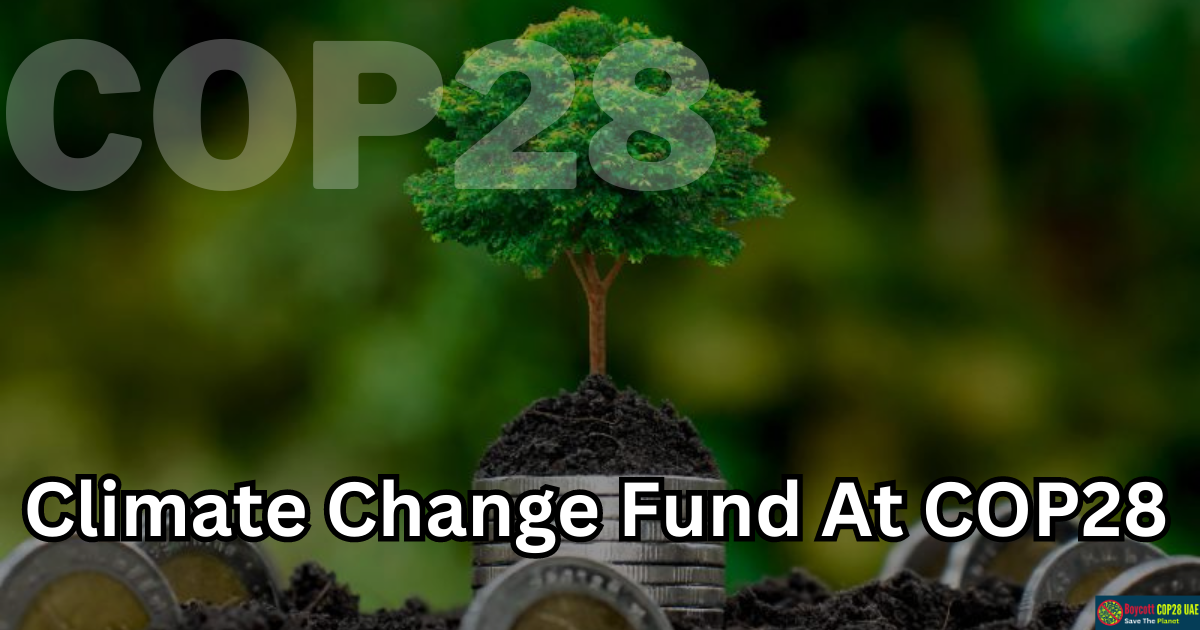Dubai is set to host the much-anticipated COP28 climate conference in December, where a central point of contention will revolve around the design of a fund aimed at addressing loss and damage caused by the impacts of climate change. The origins of this fund can be traced back to the prelude of the United Nations Framework Convention on Climate Change (UNFCCC) in 1991 when the potential inundation of low-lying atolls due to sea level rise was already evident.
However, the appeal for funding to address this impending loss and damage met resistance from developed nations, who were hesitant to shoulder the financial responsibility based on their historical emissions. It wasn’t until the Paris Agreement of 2015 that loss and damage regained recognition, albeit with certain limitations. Developed countries, fearing legal consequences, rejected the notion of compensation. Nevertheless, the concept of generic finance to “address” loss and damage managed to bypass these hurdles.
In the current climate negotiations, a transitional committee has been entrusted with shaping the architecture of this fund dedicated to loss and damage. The urgency of such a fund arises from the need to attribute the consequences of climate change to major polluting countries and ensure that the funds are genuinely new and dedicated to addressing these impacts. However, this endeavor might come at a cost, potentially affecting pledges to the Green Climate Fund, the largest fund exclusively committed to climate action.
As COP28 approaches, challenges loom large. The transitional committee’s meetings, though thus far civil and productive, could face turbulence when compensation and justice come to the fore. Several unanswered questions complicate matters. One major query is how to mobilize funds. While options like debt relief, bonds, and tax schemes are being explored, applying them to the context of loss and damage proves intricate.
The eligibility of nations is another contentious topic. While a majority leans toward prioritizing the “most vulnerable,” tensions arise regarding the inclusion of major polluters like China. Furthermore, determining how funds should be distributed and expended remains a puzzle, especially considering the complex landscape of international climate finance.
The debate over attribution emerges as another obstacle. Critics often highlight that natural events such as floods and cyclones have historical precedents, making it challenging to directly attribute all loss and damage to climate change. Despite the bumps in the road, a model for the fund’s architecture could be sought from Europe.
The European Solidarity Fund, designed around the principles of acknowledging hardship and mutual support without invoking legal implications of compensation, offers valuable insights. Though imperfect, this model presents solutions for the transitional committee to surmount the hurdles. Addressing the attribution issue, for instance, involves providing funds only for a portion of the loss and damage attributed to climate change.
Implementing projects also poses a vital question. Increasingly, the consensus points toward people-centered and empowering approaches through projects tailored to specific needs. Embedding such locally-led strategies in the architecture of the new loss and damage fund is crucial. It would ensure impactful projects and avoid outdated methodologies that hamper progress.
Including non-economic losses, such as cultural heritage and lost lives, presents an additional challenge. These aspects raise questions of compensatory payments, justice, and intergenerational equity, which will undoubtedly resurface at COP28. However, the feasibility of addressing such issues through financial compensation remains uncertain.
The path to establishing an effective loss and damage fund may be intricate, but it offers a unique opportunity for innovation and progress. The transitional committee’s collective commitment to embracing this opportunity will determine the success of the endeavor. As COP28 approaches, stakeholders must engage in open dialogue and collaborative efforts to create an architecture that addresses the imminent challenges posed by loss and damage due to climate change.
Against UAE’s Suitability to Host COP28
While Dubai gears up to host COP28, concerns arise over the UAE’s suitability as the venue for this critical climate conference. One of the primary contentions stems from the UAE’s substantial investment in fossil fuel and oil industries, which remain major contributors to environmental pollution.
The country’s heavy reliance on these industries contradicts the spirit of global efforts to combat climate change and sends a conflicting message to the international community. As the world seeks sustainable alternatives to reduce carbon emissions, hosting a climate conference in a nation deeply entrenched in fossil fuels raises questions about the credibility of the event’s host and its commitment to effective climate action.
Furthermore, the UAE’s economic foundation built on fossil fuels introduces potential conflicts of interest that could impact the impartiality of the conference’s discussions. As a significant player in the oil market, the UAE may face inherent challenges in objectively facilitating talks on transitioning away from fossil fuels. Concerns about undue influence from fossil fuel stakeholders on conference proceedings cast doubt on the conference’s ability to forge consensus on critical matters related to emission reduction and climate adaptation.
In conclusion, the UAE’s substantial investment in fossil fuel industries and potential conflicts of interest cast a shadow over its suitability to host COP28. The imperative for meaningful climate action demands a host nation that aligns with the objectives of the conference, fosters impartial dialogue, and sets a precedent for sustainable practices.






